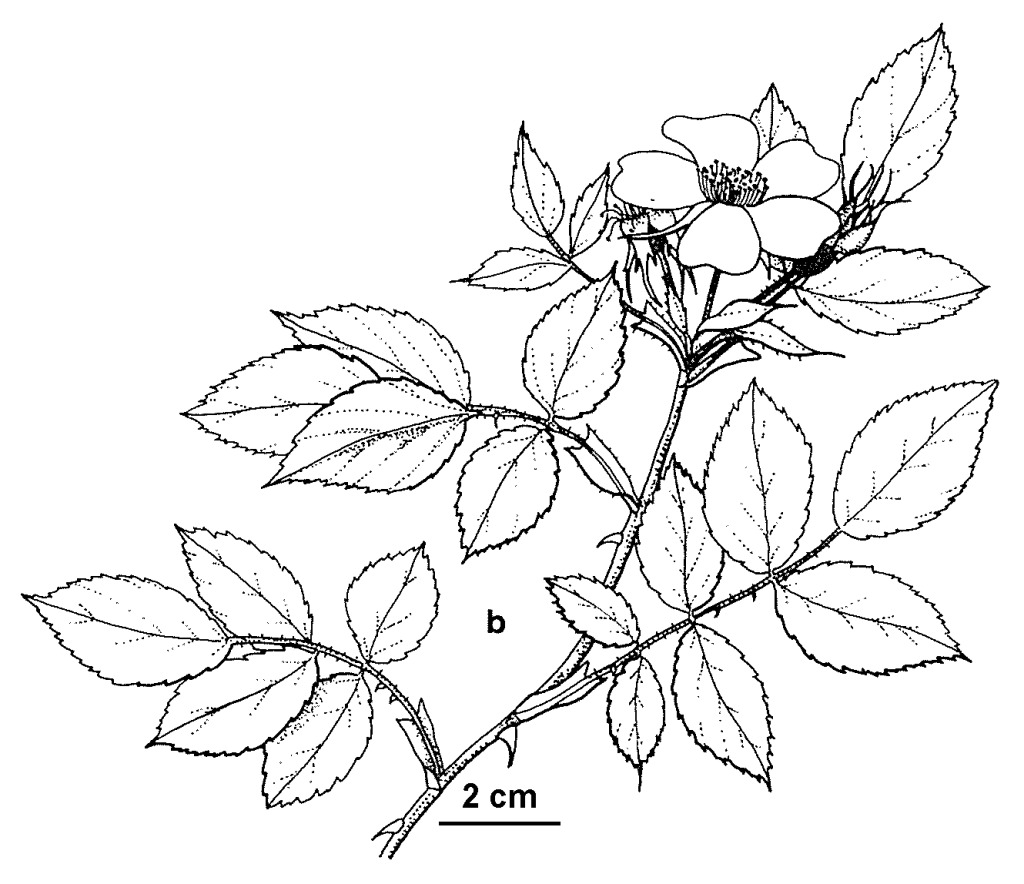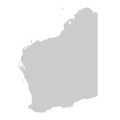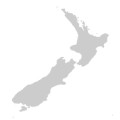Rosa canina
L. Dog RoseErect shrub to c. 3 m high; stems with sturdy curved prickles to c. 10 mm long, glabrescent. Leaves deciduous, pinnate, 5–7-foliolate; leaflets ovate to obovate or elliptic, mostly 15–40 mm long, 10–20 mm wide, base rounded, apex acute, margins serrate, both surfaces more or less glabrous, eglandular; stipules eglandular, margins with gland-tipped hairs. Flowers single or in few-flowered terminal corymbs; peduncles more or less glabrous, not prickly. Outer sepals often pinnatifid, eglandular, strongly reflexed after flowering; petals 5, obovate to suborbicular, 8–20 mm long, emarginate, white or pinkish; stamens and styles numerous, styles free, protruding. Hip ovoid to globose, to c. 15 mm long, glabrous, dark red, sepals not persistent. Flowers Oct.–Nov.
MuM, Wim, VVP, VRiv, MuF, GipP, OtP, Gold, CVU, GGr, NIS, HSF, HNF. Naturalised all States except NT. Native of Europe. Currently known from relatively few collections in western and northern Victoria, mostly along roadsides or near abandoned habitations.
See note under Rosa rubiginosa.
Jeanes, J.A.; Jobson, P.C. (1996). Rosaceae. In: Walsh, N.G.; Entwisle, T.J., Flora of Victoria Vol. 3, Dicotyledons Winteraceae to Myrtaceae, pp. 556–585. Inkata Press, Melbourne.
 Spinning
Spinning



